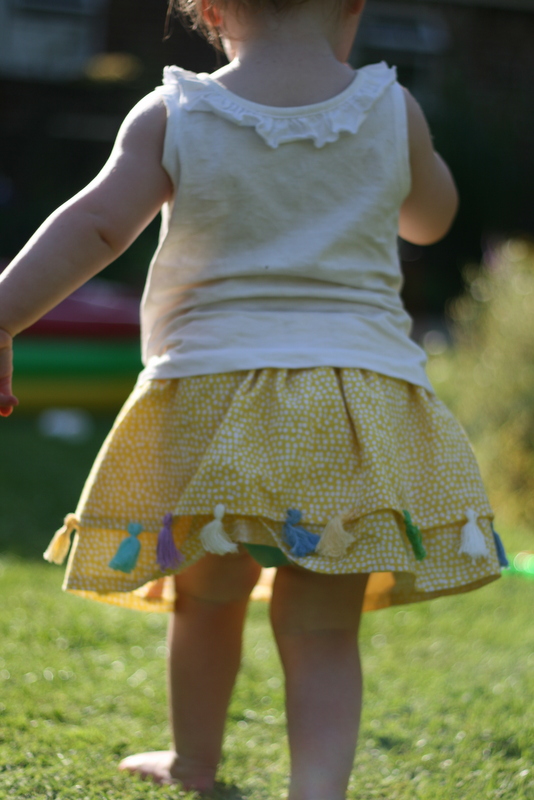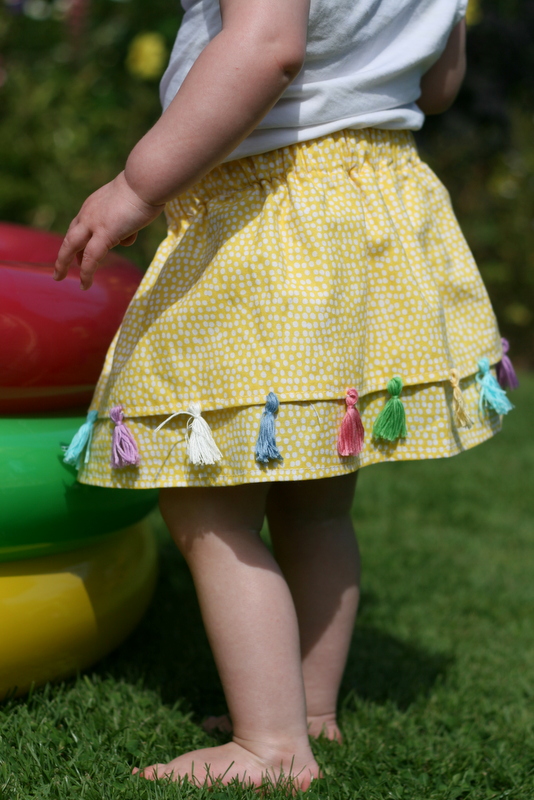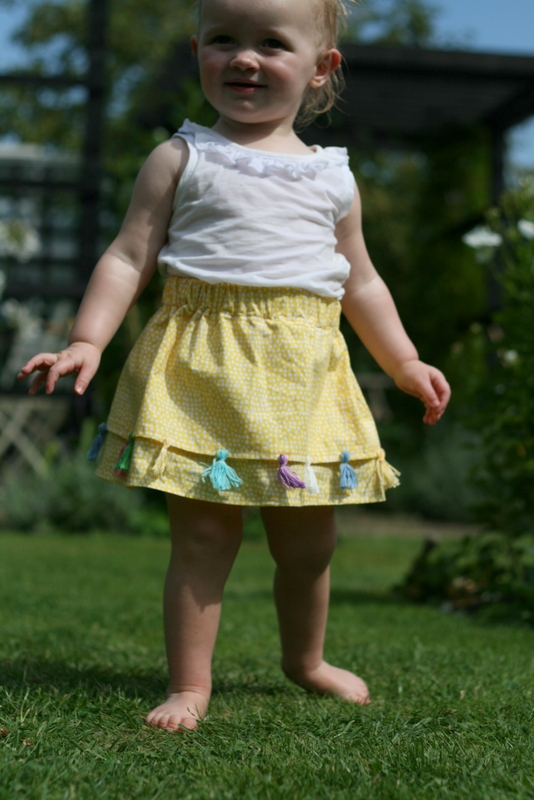We do a lot of sewing projects here at Little Button Diaries, but we only think to make skirts when the sun comes out. It turns out the last one I made was this time last year! So I thought it was about time to flex my skirt-making muscles again, for this playful, summery skirt.
The pattern I followed came from the excellent website made. As the skirt is basically just two rectangles sewn together, it’s really simple to make and then embellish.
To make this skirt you will need:
- 3/4 metre of fabric
- Embroidery thread in a variety of colours
- 1-inch-wide elastic (to the length of the size of your child’s waist plus 1 inch)
- 2 safety pins
1. Begin by working out the dimensions of your skirt. For the waist measurement, measure your child’s waist and double it.
The skirt length is made up of two layers. For the longer layer of the skirt, measure down from the waist to just above the knee and add an inch and a half to this length. For the shorter layer take two inches off the longer layer length.
2. Cut out your two rectangles of fabric, one for each layer of the skirt.
3. With the longer piece of fabric, fold right sides together and sew with a quarter-inch seam allowance. Repeat with the other piece of fabric. Press the seams out.
4. Hem the top layer of your skirt by folding down the fabric by a quarter of an inch and ironing flat. Sew in place.
5. Turn the fabrics the right way out and place the longer layer inside the shorter layer. Line up the fabrics so the tops and side seams match. Pin and sew together.
6. To make the waistband, sew a small hem at the top of the fabric. Place your elastic at the top of the skirt to work out how much fabric you need to fold down. You want the elastic to be able to fit into the casing but not be too loose. Pin and sew the casing. Leave a 2-inch gap at the back of the casing so you can feed the elastic through.
7. Put safety pins on each end of the elastic and feed it through the top of the skirt. You will have to fiddle a bit to gather the skirt evenly. Overlap each end of the elastic by an inch and sew with a zig zig stitch to secure it.
8. Before the final touches are made, try your skirt on your little button. I found that the skirt was too big on the waist so I cut a section of the elastic out and resewed it back together. Also, check you are happy with the length of the skirt.
9. Sew the elastic casing shut.
10. Hem the bottom of the skirt by turning it over a quarter of a inch, ironing it flat and sewing in place. I made my hem slightly bigger as I wanted the skirt to be shorter. So to finish I trimmed the excess off with pinking shears.
11. To make the tassels, wrap the embroidery thread around two of your fingers until you have the thickness you want. Slip it off your fingers and tie a piece of thread securely around the top. Trim the bottom of the tassels so they are all the same length.
12. I made 20 tassels for the shorter layer and spaced them 2 inches apart. Sew your tassels in place using white cotton.
~ Laura xx ~














































































































































